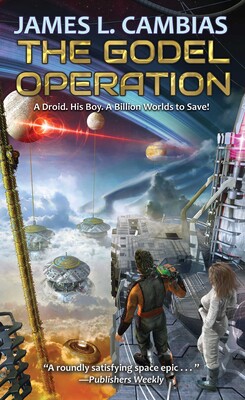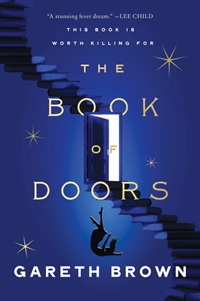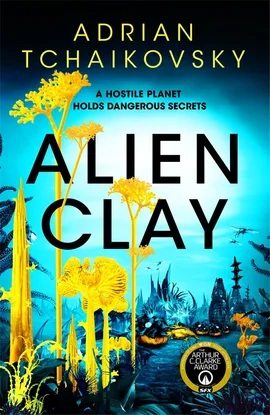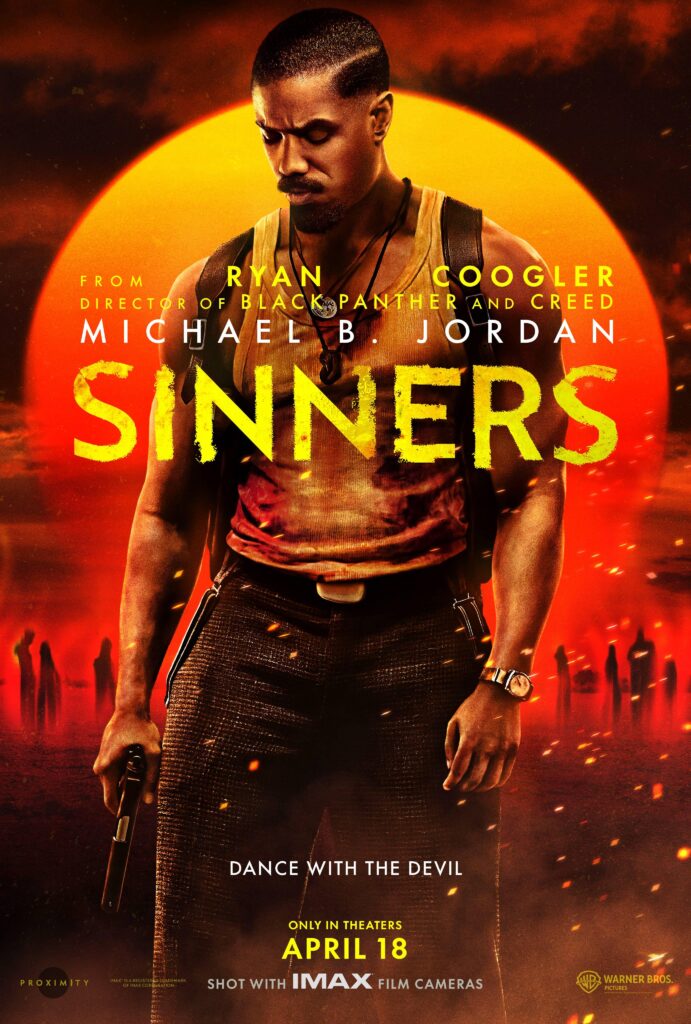Across the (Homeric) Universe: Stephen Fry’s Odyssey

Images of broken light which dance before me like a million eyesThey call me on and on across the universeThoughts meander like a restless wind inside a letter boxThey tumble blindly as they make their way across the universe— “Across the Universe”, The Beatles (written by John Lennon) I start with a quote from the Beatles for this review of Stephen Fry’s Odyssey because this book is not quite what I expected, and it encapsulates the main narrative of the book. Odyssey, the fourth book in his Mythos series (and honestly I had thought Troy, his third, would be his last)1 takes the form much more like Troy than the first two. Just as Troy was not a straight-up retelling of The Iliad, but rather the entire Trojan War from Troy’s origins (which at the time of reading that, I was rather fuzzy on) all the way to its start, and its finish. As you know, Bob, The Iliad isn’t even the end of the War, but rather just a pivotal episode in it. But he does go on to describe the end events of the Trojan War, and leaves us with Troy sacked and destroyed. And so we wind up with Odyssey, now. Odyssey does not have the titular The, and this is not, in fact, Odysseus’ story, or more belike, *just* Odysseus’ story. It is the story of all those that left the site after the end of the war. Odysseus, yes, but also Diomedes, Agammenon, and Menelaus. And, as it so happens, a survivor on the Trojan side…Aeneas. The setup of the book takes an event that Odysseus describes in one of his many tellings of his prior adventures to his various hosts2 and tells that, straight. For the first two-thirds of the book, Fry tells things from a forward perspective in this regard, rather than it being recounted to us by someone else. In Odysseus’ retelling, the ships leaving Troy were all hit by the Gods’ wrath (the Greeks did not sacrifice properly or richly enough, and did some very bad things) and so ALL the fleets and travelers home had difficulties. This re-contextualizes Odysseus’ plight as just the *worst* of them all, and so we intercut and jump between the fates of the various Greek heroes. Fry is a synthesizer and remixer of Greek myths and stories. He takes from every source he can find and puts it into his own telling. For a lot of the post-Trojan War stuff, then, he talks about drawing from various Greek plays, as well as Virgil’s the Aeneid (more on Aeneas in a moment). This gives him some more material than usual for his work, but it also means that, unlike the first three books, the wide-ranging alternatives of various characters are gone. In Mythos and Heroes, Fry struck home the idea, time and again, that there were often a dozen or more stories or contradictory details about characters. When we’ve gotten to the timeframe of The Odyssey, that is now gone. “Canon Formation” has happened, and, focusing on Odysseus again, there aren’t “alternate Odysseus stories” about his journey home in the extant literature3. So we get Agamemnon, fated to be killed by his wife Clymenestra, and the whole tragic series of stories that herald the end of the Atreus family that we find in Aeschylus. We get something quite new to me in the fate of Meneleus, who got blown about the Mediterranean and wound up in Egypt, briefly. We get Aeneas, who does go to Italy to start the line that will found Rome, but not without his dalliance in Carthage, and with Dido. We follow all of these adventures, as well as the “early adventures” of Odysseus. Eventually though, we go full-on Odysseus, and the narrative frame of telling all of these stories falls away into a more straightforward retelling of The Odyssey, completely (and disappointingly to me) following The Odyssey’s pattern of having Odysseus tell stories of his prior adventures not already recounted, to various hosts. This feels like a disappointment to me, a gear shift in the book that doesn’t quite work. After taking pains to make this Odyssey rather than The Odyssey, in the end, Fry bows to the power of Homer, and starts to straight-up tell The Odyssey. All the beats that we know from his post-Calypso sojourn are here, including the beats with Telemachus (his son) and Odysseus telling his story to anyone who will listen4. Odysseus eventually returns in disguise, with Athena’s help, and the suitors of his long suffering wife Penelope are dealt with. You may know this story even if you haven’t read The Odyssey. Certainly some of Odysseus’ story has permeated popular culture. “No man has blinded me!” Circe and her penchant to transform men into animals. Scylla and Charbydis come from the Odyssey, too. And of course coming home and slaughtering all the men who have been harassing your patient and loyal wife for 20 years. The Odyssey ends with the finale of that strife, but Fry does borrow from an earlier book in The Odyssey and makes it clear that, once the suitors are dealt with, Odysseus does have his one final journey with the oar on his shoulder. This is an episode of The Odyssey that doesn’t get as much play in adaptations, since it’s something that Tiresias tells him he must do but it takes place after the events of the main narrative. And that journey and those sacrifices can be truly seen to be the end of Odyssey, and the Greco-Roman myth cycle. In the course of the book, he has brought Aeneas to face Turnus and the end of that story cycle. And with that, the Greek Myth cycle that started with Mythos really is over. The Greco-Roman Gods and Goddesses, who, as Fry has noted, have been withdrawing more and more from human affairs, end their active engagement entirely. No more divine children, no more getting messed up
Book Review: Inventing the Renaissance by Ada Palmer

I think Palmer’s Inventing the Renaissance justifies its size and then some.
And for the genre reader, this is a chonky, valuable book for showing that the past is a different country…and yet the people in it are awfully human. One can get a real appreciation for authors like Jo Graham and Guy Gavriel Kay by reading the full-on history that Palmer provides here…
Book Review: The Godel Operation by James Cambias

It’s a style of science fiction that may feel rather retro.² However, stylistically, the writing from Cambias does make The Godel Operation a throwback and calling back to relatively breezy and fun science fiction novels.
Book Review: The Book of Doors by Gareth Brown

This is a book not quite about the power of books and doors and going places by opening one, but instead, it is a twisting and intricately devised narrative of stable time travel loops. Brown has a lot of fun in the novel…
Book Review: Adrian Tchaikovsky’s Alpha Centauri: Alien Clay

And on a planet like Kiln, where the alien life is incompatible with human life…but the alien life is extremely good at trying to bridge that gap, this is a slow death sentence…or is it? Daghdev is a classic protagonist in the Tchaikovsky model, often isolated from his fellows and only slowly coming to bridge those gaps as well…
Joint Reaction and Review: Trish Matson and Paul Weimer discuss SINNERS

SINNERS (2025)Directed by Ryan CooglerWritten by Ryan CooglerCinematography by Autumn Durald Arkapaw Starring:Michael B JordanMiles CatonHailee StenfeldJack O ConnellWunmi MosakuJamie LawsonOmar MillerDelroy Lindo Trish: The first trailer that I saw last year for “Sinners” was a bit cryptic, but I was excited because it reminded me a bit of a great Actual Play campaign I’d seen on Twitch, based on the Harlem Unbound module for Call of Cthulhu, called Harlem Hellfighters never die, in which Black pilots fresh back from the Great War found that there were even greater horrors lurking back home. Here, the trailer showed some Black men returning to the rural South and facing some kind of horror. And the movie was written and directed by Ryan Coogler, who directed Black Panther and other fine films, and starring Michael B. Jordan, a very fine actor, and numerous other notables! So I was all in for the movie, months ago, tried to avoid further spoilers, and saw it the first chance I got, Saturday of opening weekend. It wasn’t quite what I expected, but it was really great, and I do recommend seeing it in a theater if possible. The plot was gripping, the monsters had some seductive arguments, and the blues music running throughout the movie, and providing and enhancing major plot points, was strong, soaring, pulse-pounding and moving. Paul: For me, this was an unlikely movie to get me to watch. A horror movie, and one that is strongly focused and grounded and centered on music is not something that I normally would have contemplated going to see in the theater, or even renting a stream of. It is completely outside my normal genres on those two axes. I am very glad, however, that I was persuaded to do so. The movie is a slow burn in terms of genre. We get a sense at the beginning, given the wrapping story, that something very bad has happened to Sammie (Miles Caton), driving up to his father’s church wearing bloody rags, clutching a remnant broken neck of a guitar and his preacher father exhorting him to put it down and come to the Lord. Something terrible has happened, but what? The story then jumps back twenty-four hours, and shows us this one-day story. Sammie is a sharecropper on a cotton plantation in the deep south, in 1932, in the Mississippi Delta. He finishes his quota as fast as he is able, so that he can play his beloved music, to the chagrin of his father. Trish: Pastors condemning jazz and blues music as a tool of the Devil is an old trope, of course, about as old as those musical forms themselves. Many a jazz/blues musician has roots in Gospel music, because that’s where a poor Black person would have any opportunity for musical training in rural Mississippi, and many of them have been condemned for turning to “the devil’s music” associated with drinking, dancing, lust, fornication, other sins, and even just staying up late Saturday and missing church on Sunday. Moreover,, Delta blues musician Tommy Johnson claimed to have sold his soul to the Devil in exchange for mastery of the guitar. (Evolving musical forms of rock and roll and their descendants are similarly opposed by fundamentalists.) So the prologue felt very familiar to me, didn’t require any explanation, and instantly provided some worldbuilding references for people who already knew the context. In this case, the preacher was certainly vindicated in his fears for his son, although the danger turned out to be as much on account of Sammie’s mortal peril as for the perils to his soul. Paul: When Sammie’s cousins Smoke and Stack, identical twins ably played by Michael B. Jordan, show up, the plot kicks off. War veterans, former violent enforcers of Al Capone in Chicago, they’ve come back to create a Juke Joint in the Delta, a place for their people to go. So, much of the first act of the movie is Sammie going along with the brothers as they assemble the people they need to make it happen. We get introductions to all the characters that will be central to the drama. Smoke’s estranged wife Annie. Local Chinese shopkeepers and cooks Grace and Bo. Singer Pearline. Pianist Delta Slim, and others, including Stack’s ex-girlfriend Mary (Hailee Stenfeld), who is of mixed race but usually passing for white. The group congregates at a local abandoned sawmill which the twins have bought, with cash, from a local KKK honcho. Tonight, there will be food, drink, and music. MAJOR SPOILERS FOLLOW Paul: Up to this point, this movie is entirely a period piece, soaked in the music of the Blues and of the culture and place of the Mississippi Delta in the 1930s. But the movie starts its slow turn when a mysterious stranger arrives at a farm, claiming that Choctaws were chasing him, and asking to be let in. The couple who own the farm do so. The Native Americans arrive, warn the couple not to let such a dangerous individual as whom they are hunting in, and leave. Meantime, the vampire, for that is what he is, soon turns the couple and the genre part of the movie is off and running, Until the vampires decide to descend on the Juke Joint, the movie shows us our protagonists at their happiest, partying, drinking, eating, having sex, and playing music. One of the more fantastical and mystical and best scenes of the movie for me occurs here. Sammie is invited to play and give his real debut to the audience. We had gotten a voiceover intimation that people who can truly play music can transcend space and time, and this is what actually occurs in this set piece. As the audience dances and sways and reacts to the beautiful and heartfelt music, we see images, flashes of others in the audience, ranging from Africans and Native Americans in the far past, to futuristic costumed individuals beyond even our era of the

